Greetings, friends!
Probably any builder wants to see how the walls of the house that he is building grow.
The first wall will never be forgotten, probably it will be so when I see the first honey in my apiary. I can’t forget this moment, it has a special taste, color, smell and charm.
Finally, the construction phase came when, I needed to choose the material for the walls of our house.
As it turned out, this is not an easy task.
Many factors must be taken into account, such as durability, strength, thermal conductivity, hydroscopicity, and, of course, the price of the issue ..
Later, I will tell about each option that I came across, each of them has its pros and cons, there are pitfalls that are difficult to find out until you try them, personally, they are not talked about such moments, perhaps the builders want other people to be able to step on the same rake.
My choice fell on natural material, limestone, which is mined in our country.
It is mined in deep and huge mines, similar to cities.
There, underground, trucks move like ants, and, huge combines, sawing a stone.
Previously, this limestone had perfect configurations, which made it possible to finish the walls of the house on both sides.
But, for many years, the saws with which the stone cuts, worn out, but nobody changes them. They did it simply. That stone block, which used to be of the second grade, now has become the first grade, and so on.
But, I was able to choose the best option, I had to tour many mines.
On different layers, the stone differs in the content of the shell and its characteristics, all of this, it was necessary to take into account.
I concluded a contract for the supply of stone and purchased a concrete mixer, which did an excellent job with the preparation of cement-sand mortar.
In the beginning, slowly, then, faster, the walls of our house began to grow.
The mountains of stone in the area were a little scary, but you get used to everything.
It looks like limestone, cut into blocks. Its size is 200x200x400 millimeters, the walls of the house will be 400 millimeters thick. No, they will be thicker, you need to add the thickness of the plaster, on both sides and 100 millimeters per insulation.
The first wall, or, its beginning. Rain, sometimes, forced us to take breaks in construction.
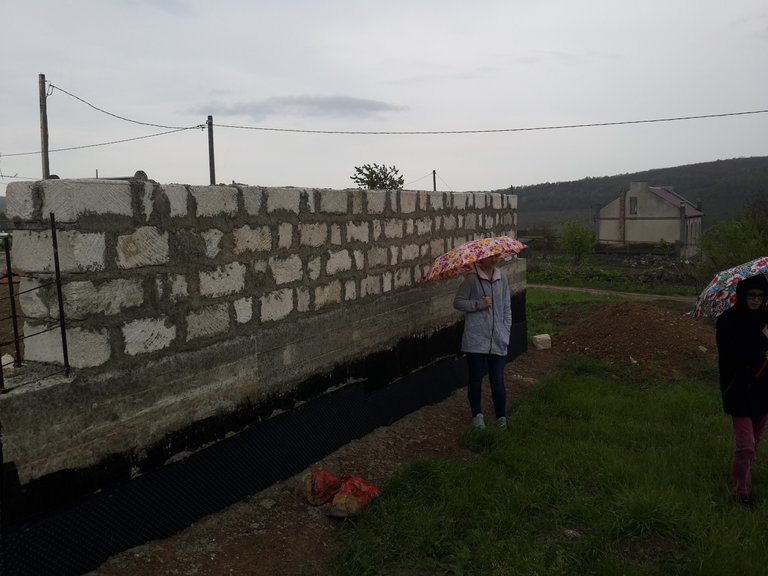
The geometry and strength of this stone allowed us to cut scaffolding from it for high-altitude work. This, saved some money on the rental of scaffolding.
I liked to watch the progress of construction, in any weather.
An important point, you see how, through every third layer of stone, a reinforcing mesh is laid, which, then, will be connected in a monolithic, concrete column.
Then, the foundation of the house, and, each element of the wall of the house, will become, one, whole.
I began to recognize the shape of one of the ends of the house.
For balance, here is the opposite side.
Gradually, the facade of the house began to loom.
In the back, while, walked a draft. But, it’s hard for me to convey the joy that filled my heart.
I was looking forward to a new phase of construction.
To be continued!
UkraineAuthor @barski
For my publications, I do not use stock photographs, it is fundamentally important for me to use photographs that I have made with my own hands for publication and I can name them - authorial work.
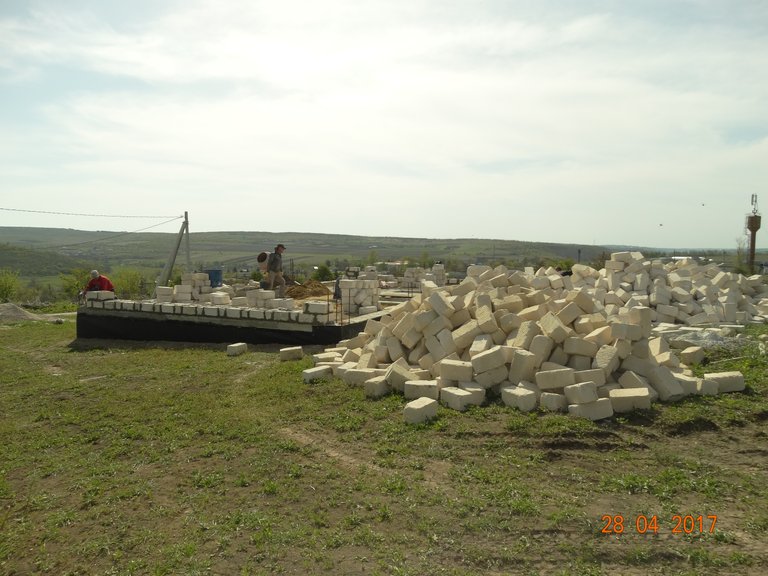
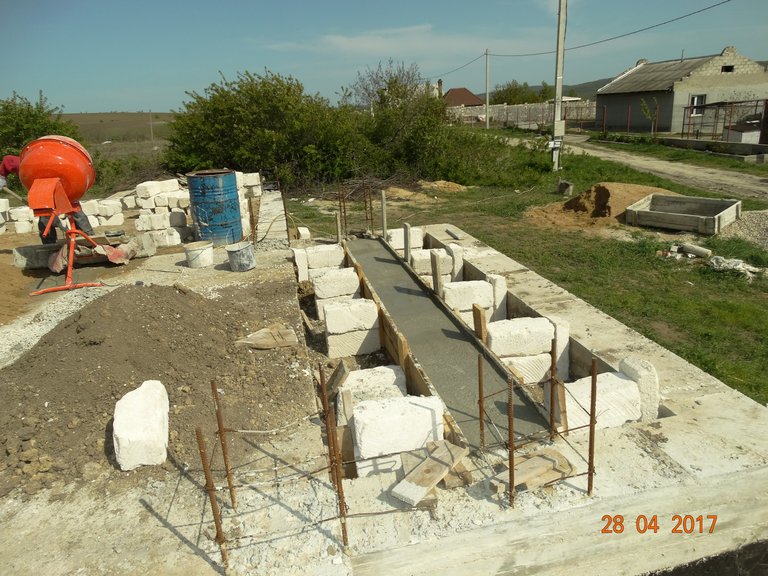
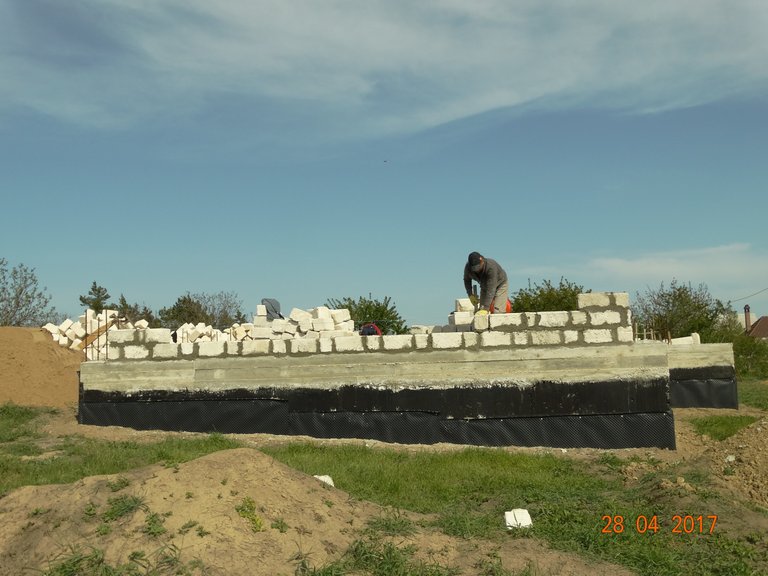
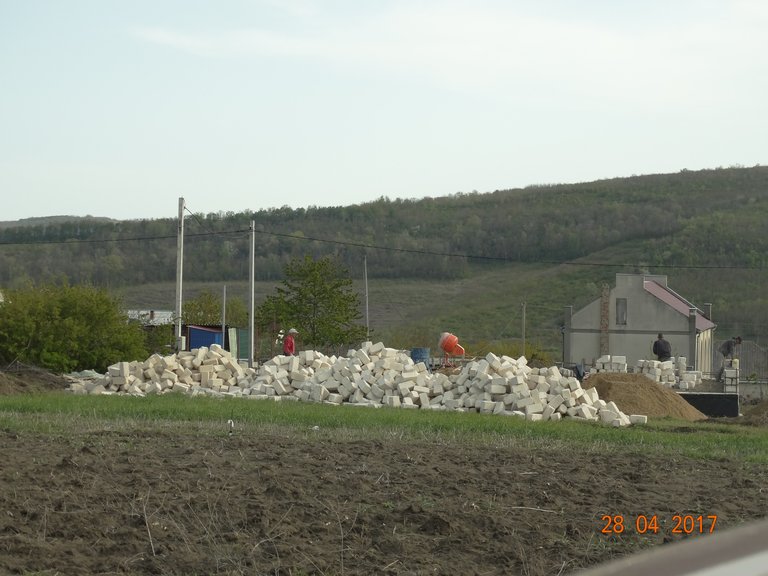
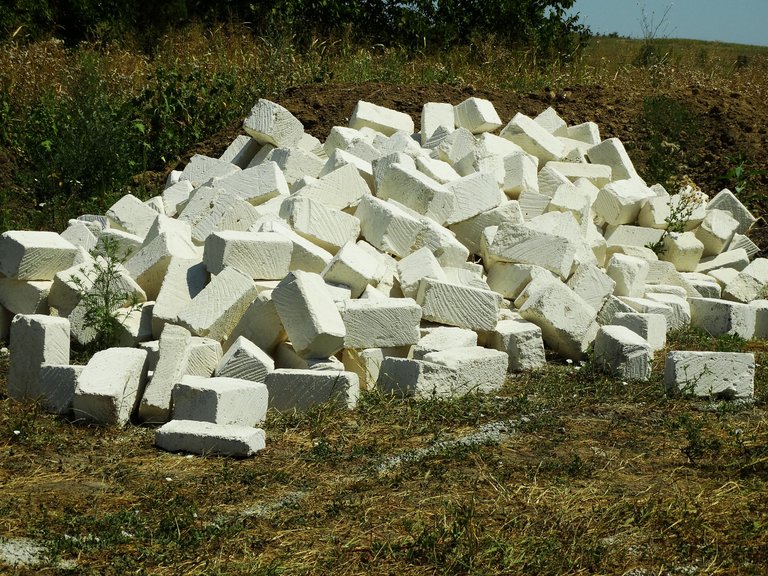
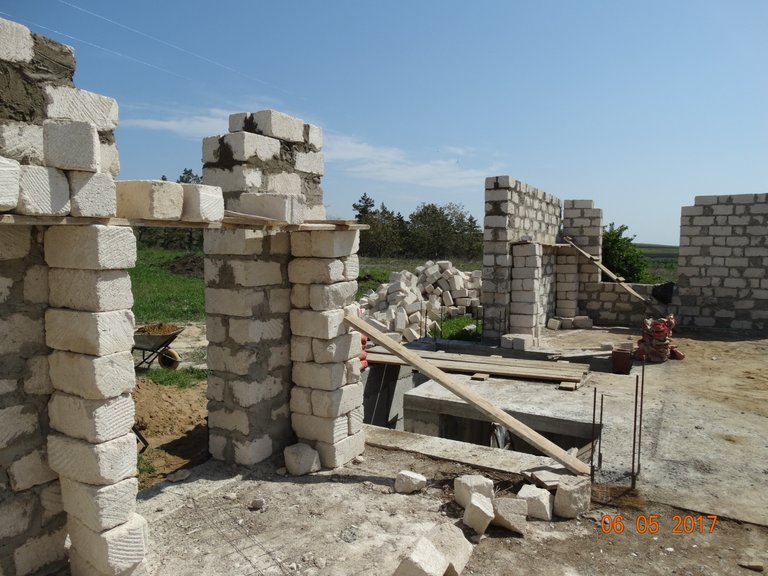
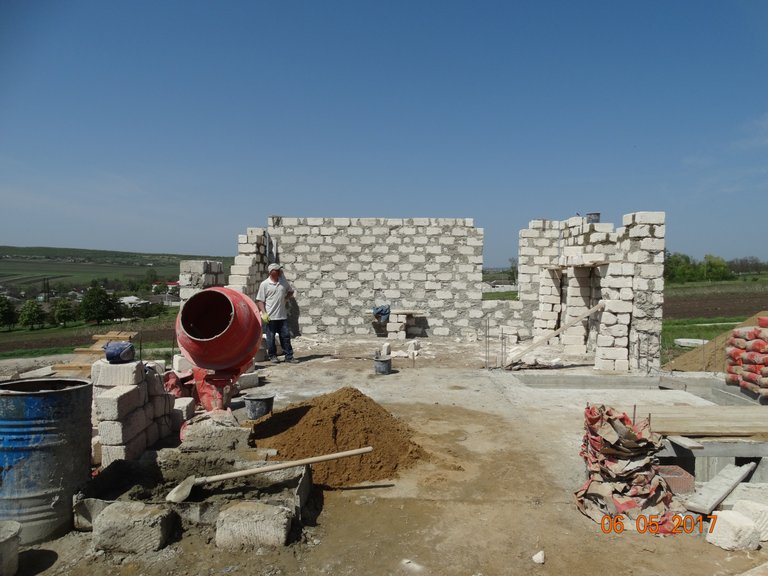
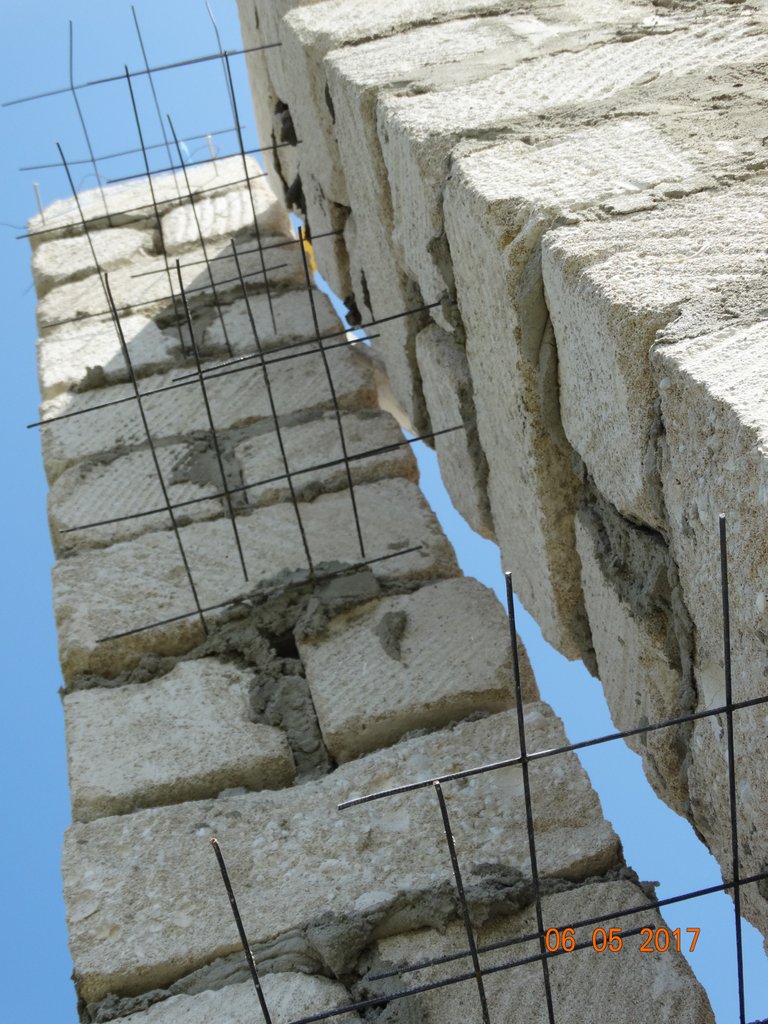
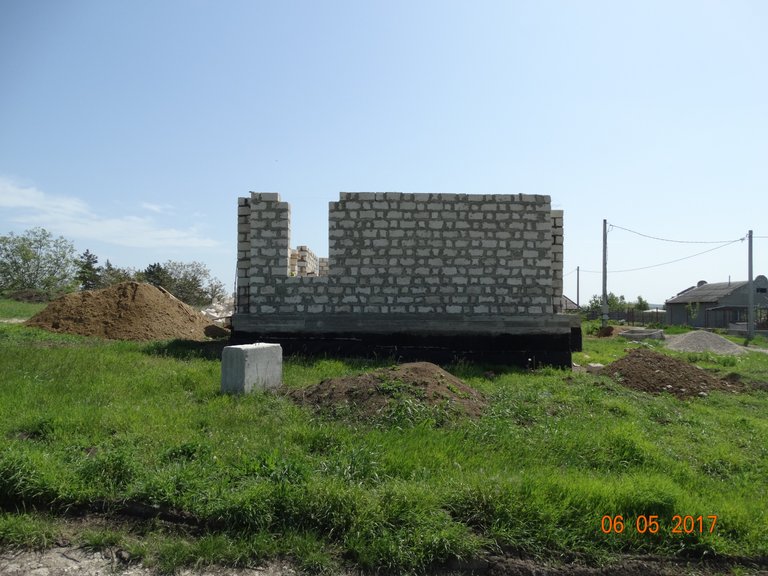
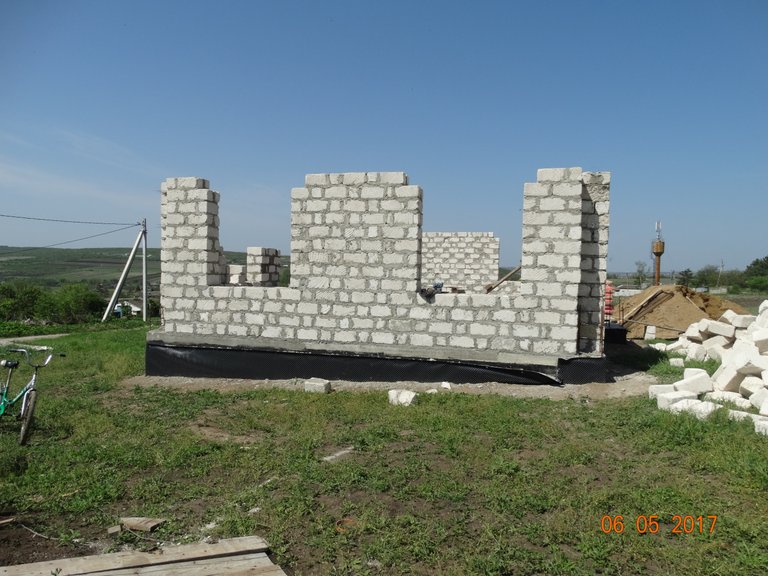
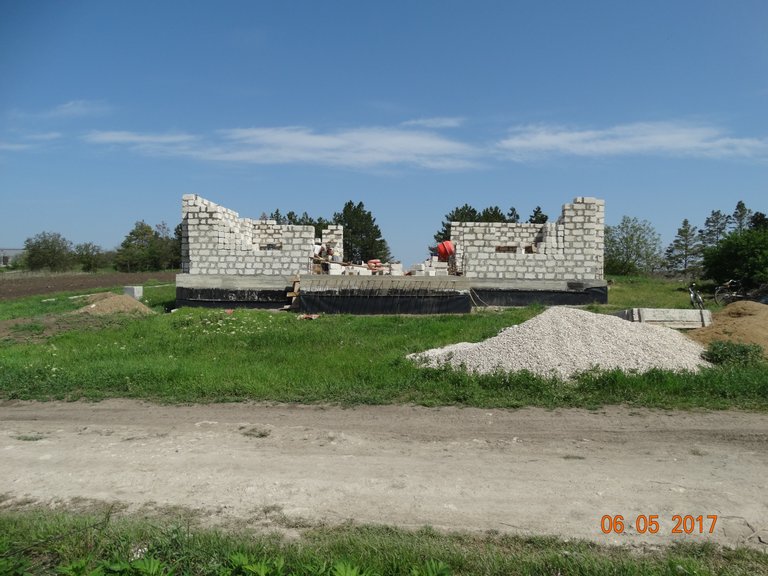
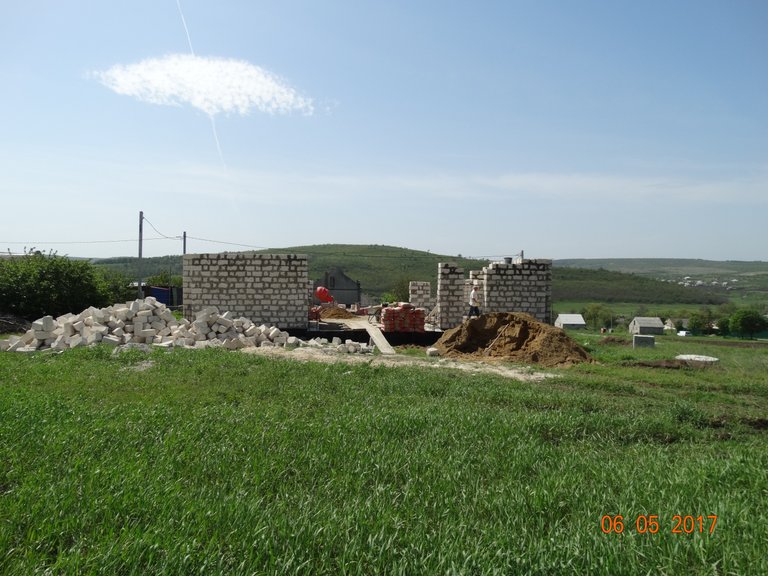
My Twitter post
Congratulations @barski! You have completed the following achievement on the Steem blockchain and have been rewarded with new badge(s) :
You can view your badges on your Steem Board and compare to others on the Steem Ranking
If you no longer want to receive notifications, reply to this comment with the word
STOPTo support your work, I also upvoted your post!